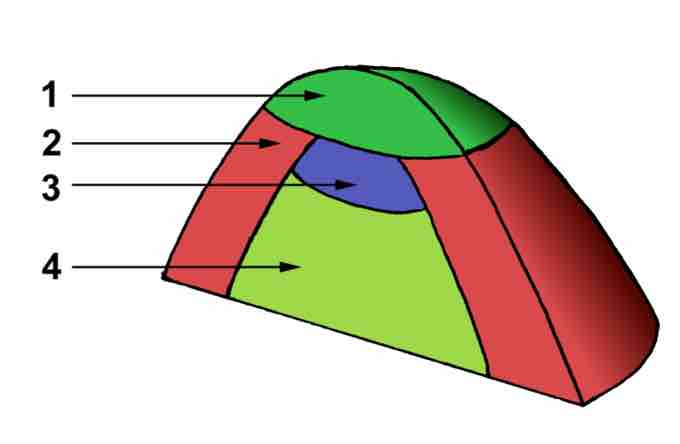Meristems
The adult body of vascular plants is the result of meristematic activity. Plant meristems are centers of mitotic cell division, and are composed of a group of undifferentiated self-renewing stem cells from which most plant structures arise. Meristematic cells are also responsible for keeping the plant growing. The Shoot Apical Meristem (SAM) gives rise to organs like the leaves and flowers, while the Root Apical Meristem (RAM) provides the meristematic cells for the future root growth. The cells of the shoot and root apical meristems divide rapidly and are considered to be indeterminate, which means that they do not possess any defined end fate. In that sense, the meristematic cells are frequently compared to the stem cells in animals, which have an analogous behavior and function.
Meristem tissue and plant development
Meristematic tissues are cells or group of cells that have the ability to divide. These tissues in a plant consist of small, densely packed cells that can keep dividing to form new cells. Meristematic tissue is characterized by small cells, thin cell walls, large cell nuclei, absent or small vacuoles, and no intercellular spaces.
Meristematic tissues are found in many locations, including near the tips of roots and stems (apical meristems), in the buds and nodes of stems, in the cambium between the xylem and phloem in dicotyledonous trees and shrubs, under the epidermis of dicotyledonous trees and shrubs (cork cambium), and in the pericycle of roots, producing branch roots. The two types of meristems are primary meristems and secondary meristems.
Meristem Zones
The apical meristem, also known as the "growing tip," is an undifferentiated meristematic tissue found in the buds and growing tips of roots in plants . Its main function is to trigger the growth of new cells in young seedlings at the tips of roots and shoots and forming buds. Apical meristems are organized into four zones: (1) the central zone, (2) the peripheral zone, (3) the medullary meristem and (3) the medullary tissue .

Meristematic zones
Each zone of the apical meristem has a particular function. Pictured here are the (1) central zone, (2) peripheral zone, (3) medullary meristem and (3) medullary tissue.
Apical meristem
The apical meristem, pictured in the center of the leaves of this image, is also termed the "growing tip". Its main function is to begin growth of new cells in young seedlings at the tips of roots and shoots (forming buds, among other things).
The central zone is located at the meristem summit, where a small group of slowly dividing cells can be found. Cells of this zone have a stem cell function and are essential for meristem maintenance. The proliferation and growth rates at the meristem summit usually differ considerably from those at the periphery. Surrounding the central zone is the peripheral zone. The rate of cell division in the peripheral zone is higher than that of the central zone. Peripheral zone cells give rise to cells which contribute to the organs of the plant, including leaves, inflorescence meristems, and floral meristems.
An active apical meristem lays down a growing root or shoot behind itself, pushing itself forward. They are very small compared to the cylinder-shaped lateral meristems, and are composed of several layers, which varies according to plant type. The outermost layer is called the tunica, while the innermost layers are cumulatively called the corpus.